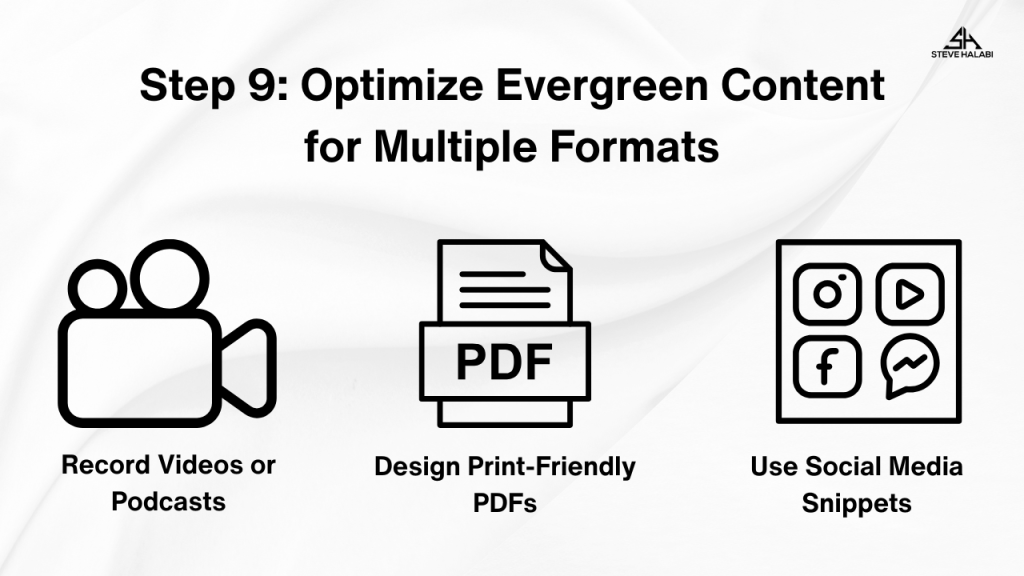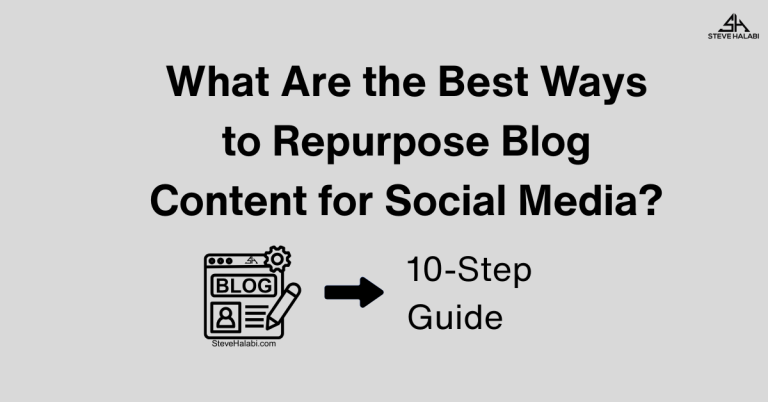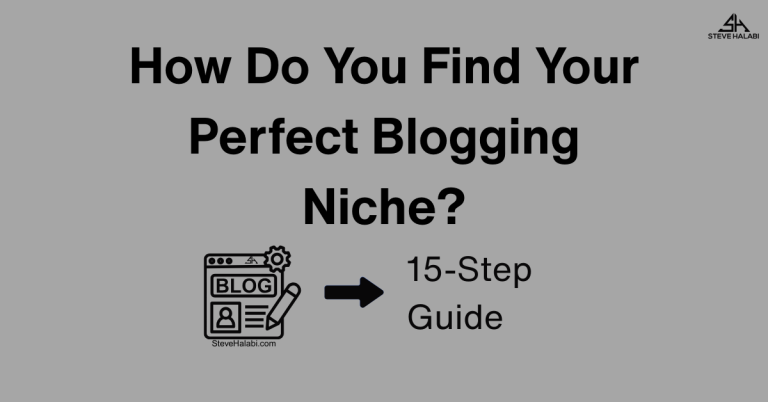Write Evergreen Content for Long-Term Traffic
Introduction: Why Choosing the Right Topic is Important
Writing evergreen content is like planting a tree that continues to grow and provide value for years. By focusing on timeless topics, actionable insights, and clear presentation, you can create articles that steadily attract readers and drive traffic, long after the initial publication date.
This guide will show you how to identify the right topics, structure your articles effectively, and maintain them for ongoing success.
What Makes Content Evergreen?
Before diving into the creation process, it is essential to understand what qualifies as evergreen content. Unlike timely news articles or seasonal posts, evergreen content remains useful and relevant to readers regardless of when they discover it. Key characteristics include:
- Timeless Value:
The information in evergreen articles doesn’t become outdated quickly. - Ongoing Relevance:
Topics address enduring questions or needs, such as How to Start a Blog or A Beginner’s Guide to SEO. - Sustained Traffic Potential:
Because the content remains relevant, it consistently attracts new readers through search engines and social sharing.
Example:
A guide on Basic Yoga Poses for Beginners is evergreen because the foundational poses remain the same, making it helpful for anyone starting yoga now or years later.
Pro Tip: When planning topics, ask yourself: Will this information still be helpful to someone one or two years from now?
Let’s get started!
Disclosure: When you buy through a link on this site, I may earn a commission at no extra cost to you.
Step 1: Choose Topics with Long-Term Appeal
The foundation of evergreen content is selecting topics that stand the test of time. This involves identifying subject matter that isn’t tied to a specific event, date, or trend.
- Focus on Core Questions:
Address basic, frequently asked questions in your niche that never go out of style. - Think About Beginners:
Evergreen posts often cater to newcomers, as beginner-friendly guides are always in demand. - Avoid Trend-Dependent Topics:
Steer clear of fads or short-lived phenomena. Instead, choose subjects that remain stable over time.
Example:
A cooking blog might focus on How to Make a Perfect Omelette rather than Top Food Trends of 2025.
Pro Tip: Use tools like AnswerThePublic or Google’s People Also Ask section to find questions that readers are consistently searching for.
“Discover what people search for year after year. AnswerThePublic gives you timeless questions and ideas you can turn into evergreen posts!”
Get Started Here! AnswerThePublic
Step 2: Conduct Keyword Research for Long-Term Relevance
Once you have a topic, choosing the right keywords ensures your content stays visible in search results. Focus on terms that people will search for over the long haul, rather than ones tied to a fleeting trend.
- Use Keyword Tools:
Platforms like Ubersuggest, Ahrefs, or SEMrush can identify keywords that have steady search volume over time. - Prioritize Long-Tail Keywords:
Longer, more specific phrases often have less competition and remain relevant to a focused audience. - Check Competitors’ Keywords:
Analyze top-ranking evergreen content in your niche to find recurring keywords. - Look for Questions and How-Tos:
Keywords framed as questions or instructional phrases (how to, best way to) tend to have lasting appeal.
Example:
Instead of targeting new iPhone tricks, consider how to improve smartphone battery life, a topic that remains relevant regardless of the device model.
Pro Tip: Regularly revisit your keywords to ensure they remain aligned with current search trends and make minor adjustments as needed.

“Ahrefs helps you identify keywords with stable search volume and lasting demand so your posts keep pulling traffic long after they’re published!”
Get Started Here! Ahrefs
Step 3: Structure Your Content for Clarity and Readability
A well-structured article not only helps your audience understand the information, but it also makes your content easier for search engines to crawl and rank.
- Use Headings and Subheadings:
Break the content into sections with clear, descriptive headers, such as the steps in this guide. - Incorporate Bullet Points and Lists:
Lists help readers quickly scan for key takeaways. - Write Short, Concise Paragraphs:
Long walls of text are hard to read. Aim for 2-3 sentence paragraphs for better readability. - Add Visual Elements:
Include images, charts, or infographics that support the content and enhance its engagement.
Example:
A personal finance blog might present 5 Simple Budgeting Steps as a numbered list with each step highlighted by a bold heading.
Pro Tip: Use a consistent format across all evergreen posts to establish a recognizable style and improve user experience.
“Grammarly ensures your evergreen posts are easy to read, free from errors, and clear for both readers and search engines.”
Get Started Here! Grammarly
Step 4: Provide Actionable Advice and Detailed Instructions
Evergreen content succeeds when it offers readers real solutions they can implement immediately. By providing clear, step-by-step guidance, you ensure your content remains valuable over time.
- Break Down Complex Tasks:
Divide larger processes into smaller, easily digestible steps. - Use Real-World Examples:
Illustrate your points with scenarios readers can relate to. - Include Pro Tips:
Share insider knowledge or time-saving techniques to add extra value. - Offer Checklists and Resources:
Provide printable checklists or links to helpful tools, allowing readers to take immediate action.
Example:
A fitness blog might explain how to create a weekly workout schedule, including recommended exercises, rest days, and beginner-friendly alternatives.
Pro Tip: Keep instructions timeless. Avoid references to dates or rapidly changing technologies so the advice remains relevant.
“Organize step-by-step frameworks, checklists, and resources inside Notion so your evergreen content is always structured and practical!”
Get Started Here! Notion
Step 5: Include Detailed, Enduring Examples
The examples you use in evergreen content should stand the test of time. Instead of referencing a recent event or fad, choose case studies and scenarios that remain useful for years.
- Choose Timeless Scenarios:
Select examples that highlight universal challenges and solutions. - Show Before-and-After Results:
Demonstrating clear outcomes makes your advice more compelling and easier to trust. - Incorporate Data Points:
Use long-term studies or widely accepted statistics that don’t go out of date quickly. - Revisit Examples Over Time:
Periodically update or refine examples to ensure they remain relevant.
Example:
In a post on improving website load times, you could showcase how optimizing images reduced page load speed by 50%, a result that’s still relevant even as web technologies evolve.
Pro Tip: Whenever possible, base examples on scenarios that are unlikely to change, ensuring your content stays fresh.

“Draft, refine, and collaborate in Google Docs to build examples that can be updated easily as your evergreen content evolves!”
Get Started Here! Google Docs
Step 6: Build Trust with Authoritative Sources and Accurate Information
Evergreen content gains credibility and long-term value when it’s built on a foundation of reliable data and expert knowledge. Readers will return to and share your content if they trust its accuracy.
- Cite Reputable Sources:
Reference well-known studies, respected industry reports, or official documentation. - Link to Expert Opinions:
Quote industry leaders or include interviews with specialists in your field to lend credibility to your content. - Avoid Speculation:
Stick to facts and avoid making predictions that might become outdated. - Regularly Fact-Check:
Revisit your content periodically to ensure that the information remains accurate and up-to-date.
Example:
A tech blog explaining How to Secure Your Wi-Fi Network might link to official guides from major router manufacturers or the FCC for best practices.
Pro Tip: When using data or statistics, note the original source and include the date. If the data becomes outdated, update it to maintain credibility.
“SurferSEO helps you validate content against top-ranking competitors so your evergreen posts are authoritative and trusted.”
Get Started Here! SurferSEO
Step 7: Keep Your Evergreen Content Updated and Well-Maintained
Even the most timeless content can benefit from occasional updates. Refreshing your posts ensures they stay accurate, continue to rank well, and remain valuable to readers.
- Set a Regular Update Schedule:
Review each piece of evergreen content at least once or twice a year to ensure all information is still relevant. - Check for Broken Links:
Verify that all external links remain active and direct users to useful resources. - Add New Insights or Tools:
If new best practices or tools have emerged since the original publication, incorporate them. - Update Visuals and Screenshots:
Replace old images or outdated screenshots with fresh, current visuals.
Example:
A guide on Best Free Blogging Tools could be updated annually to include the latest and most effective tools on the market.
Pro Tip: Announce updates on social media or in email newsletters, reminding your audience of the ongoing value your evergreen content provides.
“Use Asana to schedule regular reviews of your evergreen posts, check links, and add new insights without losing track.”
Get Started Here! Asana
Step 8: Link Your Evergreen Posts to Build a Strong Content Network
Interlinking your evergreen content helps readers navigate your site more easily and boosts your SEO by creating a web of related, high-quality resources. This internal linking strategy increases the time readers spend on your site and helps search engines better understand your content, ultimately enhancing your online presence.
- Identify Related Articles:
- Find other evergreen posts or complementary guides on your blog that align with your topic.
- Use Descriptive Anchor Text:
- Instead of click here, use meaningful phrases like learn how to start a blog or guide to creating a content calendar.
- Place Links Naturally:
- Include links where they make sense contextually, such as after providing a detailed explanation or when referencing a related topic.
- Update Old Posts with New Links:
- As you publish more evergreen content, revisit earlier posts to include links to these newer resources.
Example:
A post on Keyword Research Basics could link to another article on Long-Tail Keywords for Beginners within a section that discusses finding low-competition phrases.
Pro Tip: Maintain a simple spreadsheet or document that tracks which evergreen posts are linked to each other. This ensures your internal linking strategy remains consistent and easy to manage.
“ThirstyAffiliates lets you create clean, trackable internal links so your evergreen articles support each other and stay professional!”
Get Started Here! ThirstyAffiliates
Step 9: Optimize Evergreen Content for Multiple Formats
To maximize the reach of your evergreen content, repurpose it into different formats that cater to diverse audience preferences. By offering the same valuable information in new ways, you’ll expand your audience and increase the content’s longevity.
- Create Infographics or Charts:
Turn-key data points or processes into visually appealing infographics that readers can quickly digest. - Record Videos or Podcasts:
Transform an evergreen guide into a short instructional video or podcast episode. - Design Print-Friendly PDFs:
Offer downloadable PDF versions of your evergreen posts as convenient, on-the-go resources. - Use Social Media Snippets:
Break down key points into shareable social media posts or carousel slides on platforms like Instagram or LinkedIn.
Example:
A detailed blog post on How to Write a Business Plan could be repurposed into a video tutorial, a downloadable business plan template, and a series of social media tips.
Pro Tip: Pay attention to which formats your audience engages with most, and focus on repurposing content into those formats.

“Repurpose posts into infographics, PDFs, or social graphics with Canva, making your evergreen content work across every channel.”
Get Started Here! Canva
Step 10: Use Visuals That Remain Relevant Over Time
Visual elements enhance the appeal and keep your evergreen content engaging. Select visuals that won’t quickly become outdated, ensuring your articles remain fresh and visually appealing for years to come.
- Pick Timeless Images:
Use high-quality stock photos, illustrations, or diagrams that don’t reference specific events or trends. - Create Reusable Infographics:
Design graphics that highlight timeless data or processes. Even as minor details evolve, the core visual can remain useful. - Add Simple Charts and Graphs:
If you include performance metrics or case studies, display them in a way that allows for easy updates without requiring a redesign of the entire visual. - Avoid Overly Styled Graphics:
Stick to clean, simple designs that don’t rely on current aesthetic fads, ensuring they remain visually appealing over time.
Example:
A graphic illustrating the steps to create a content calendar can be reused repeatedly because the process remains the same, even if the tools or platforms change.
Pro Tip: Keep original design files so you can easily update colors, text, or minor details when needed.
“Adobe Express helps you design simple, timeless visuals that don’t date your posts, keeping your content fresh year after year!”
Get Started Here! Adobe Express
Conclusion
Creating evergreen content isn’t just about writing a single great post – it’s about building a library of timeless resources that drive steady traffic and establish your blog as a trusted authority. By choosing enduring topics, providing actionable advice, and continually updating your content, you’ll create valuable assets that continue to work for you year after year.
Key Takeaways:
- Choose topics that remain relevant over time.
- Conduct keyword research to maintain consistent visibility.
- Write clear, actionable, and well-structured content.
- Keep your articles up to date and link them to other valuable resources.
- Repurpose evergreen posts into multiple formats to reach a wider audience.
Ebook: Create Evergreen Content That Attracts for Years

Build a Blog Strategy That Works Long After You Hit Publish
Evergreen content is the foundation of sustainable traffic. This eBook shows you how to write blog posts that stay relevant, continue to bring in readers, and support your business over time, without constantly chasing trends or burning out on content creation.
Here’s what you’ll learn inside:
- What evergreen content really is and how to spot the best topics
- How to write, format, and update posts for long-term value
- Examples of blog posts that keep working months or years after publishing
- Smart tools and methods to build a long-term content engine
This eBook is for you if:
- You’re ready to invest in content that works harder over time
- You’re tired of short-term traffic spikes that don’t last
- You want a blog that keeps growing even when you’re not constantly publishing








